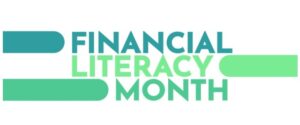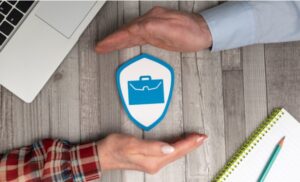Managing debt can feel overwhelming. In Canada, there are several debt relief solutions you can choose from. Each of these has its own features, benefits, and possible drawbacks. Our overview should help you make your choice from these debt management options.
Key debt relief solutions
DMP (Debt Management Plan)
A debt management plan is a voluntary agreement. A credit counselling agency negotiates with creditors on your behalf to reduce or eliminate interest. They also combine all your debts into one monthly payment.
Features: Lower interest rates, single monthly payment, no legal proceedings. You also receive credit counselling and support with setting up a budget. On the other hand, not all of your creditors may choose to participate. Note that you are still required to pay the full principal amount you owe, and your credit rating may be impacted during the course of the program.
Who is it good for?
People who have a steady income and are able to repay their debts in full. They can get relief from high interest rates and simplify their payments.
Debt consolidation loans
Most banks and credit unions offer consolidation loans. With this solution, you take out a new loan and use the funds to pay off multiple debts. After that, you have just one monthly payment towards your debt consolidation loan. This will often be at a lower interest rate.
Features: Debt consolidation loans can simplify payments and possibly lower interest rates. When managed well, it can have no or minimal impact on your credit. However, to get a debt consolidation loan, you will need to have good credit to get the best rates. You still have to pay your debts owed in full and avoid the temptation to take on more debt by using the credit that’s just been freed up.
Who is it good for?
People with good credit and a stable income.
Consumer Proposal
A consumer proposal is a legally binding process, administered by a Licensed Insolvency Trustee (LIT). In the case of bankruptcy, you offer to pay your creditors a percentage of the total amount you owe, or extend the time you have to pay it back for up to five years. If a majority of your creditors accept your proposal, it is legally binding on all your creditors.
Features: A consumer proposal can legally stop collection calls and wage garnishment, and significantly reduce the total debt owed. You will only have fixed monthly payments and retain all your assets. On the other hand, the consumer proposal will stay on your credit report for up to 6 years. A proposal only goes through once the majority of creditors approve it.
Who is it good for?
People with unsecured debts up to $250,000, excluding mortgages. It’s for people who cannot repay their debts in full, but want to avoid bankruptcy.
Bankruptcy
Bankruptcy is a legal process for those who are unable to repay their debts. Your assets (with a few exceptions) are assigned to an LIT, who will use them to pay your creditors. After that, you will be discharged from most of your debts.
Features: Provides a fresh start, financially. It can stop all legal action and wage garnishment. Most of your unsecured debts are eliminated through bankruptcy. Bankruptcy significantly impacts your credit and should be a last resort. You may lose your non-exempt assets, and it will stay on your public record for several years.
Who is it good for?
People facing insurmountable debt who have no way to repay their debts.
Other debt relief solutions
- OPD (Orderly Payment of Debts) – It is a court-approved program only in Alberta. It is a provincially administered, legally binding program.
- Credit balance transfer – A credit balance transfer lets you move debt from one credit card to another. This lets you take advantage of lower interest rates. It is a short-term strategy to pay off high-interest debt.
- LOC (Line of Credit) – A line of credit is a flexible loan that allows you to borrow up to a set limit. You can repay and borrow again as needed. A line of credit usually offers lower interest rates than credit cards. You pay interest only on the amount you borrow.
HELOC (Home Equity Line of Credit) – A HELOC is a revolving line of credit secured by your home equity. This means that your home is collateral for the HELOC. It offers lower interest rates and flexible access to funds up to your approved limit.
| Solution | Good For | Reduces debt owed? | Stops Collections | Retains Assets | Credit Impact | Duration |
|---|---|---|---|---|---|---|
| Debt Management Plan (DMP) | People with a steady income, mainly unsecured debt | No | Yes | Yes | Moderate | 2 – 4 years |
| Debt Consolidation Loan | People with a steady income, good credit, who want to combine their debts into one payment at a lower interest rate | No | No | Yes | Low/Moderate | Varies on Loan |
| Consumer Proposal | People with up to $250k in unsecured debt (including mortgages), unable to repay in full, seeking to retain assets | Yes | Yes | Yes | Significant | Up to 5 years |
| Bankruptcy | People with overwhelming debt, no way to repay in full | Yes | Yes | No (with some exemptions) | Severe | 9-24 months |
How to choose the right debt relief solution for you
- Note your debt type. Is it secured (mortgage, car loan) or unsecured (credit cards, personal loans)? Most debt relief programs are designed for unsecured debts. Knowing your debt type can help narrow your options.
- Consider your income and ability to make regular payments. If you can afford to make consistent monthly payments, a debt management plan or consumer proposal may be worth considering. If your income is too low to cover reduced payments, bankruptcy may be an option.
- Credit consequences. The impact that different debt relief solutions have on your credit varies greatly. Debt consolidation may have a milder effect on your credit score. On the other hand, a consumer proposal or bankruptcy will impact it significantly.
- Speak to a credit counselling agency for expert advice. They can review your financial situation and help you choose a path that is well-suited to your circumstances.
Key Takeaways
Canadians have several debt relief options to choose from. They each have their own benefits, drawbacks, and credit impact. What you choose will depend on your unique financial situation, like what type of debt you have, your income, and your ability to make regular payments.
You don’t need to face your debt alone. Speaking with a credit counselling agency can help you better understand your options and find a solution.






